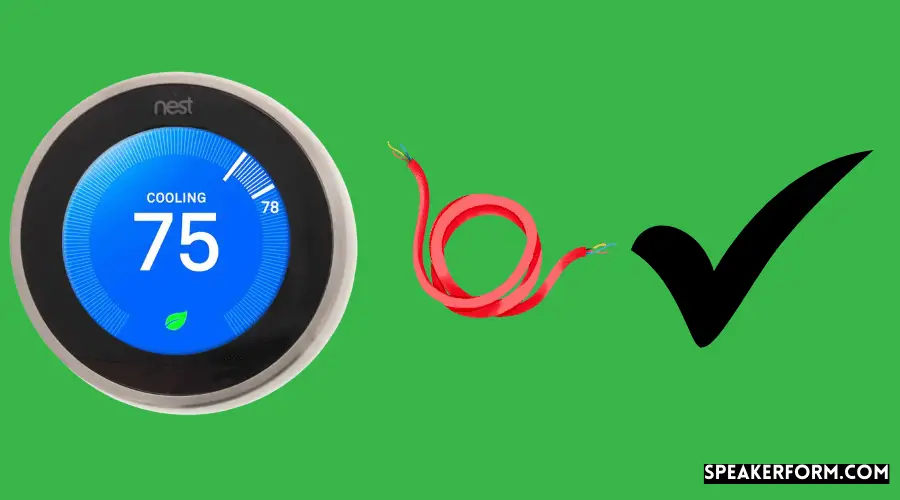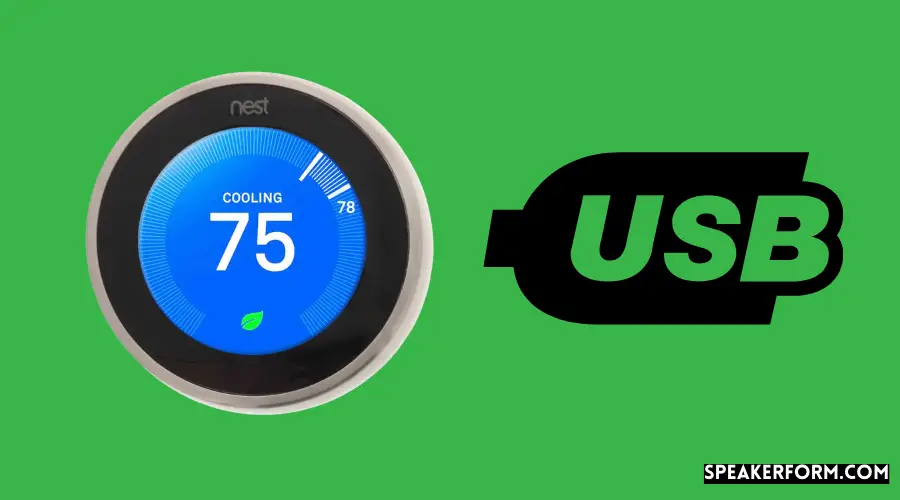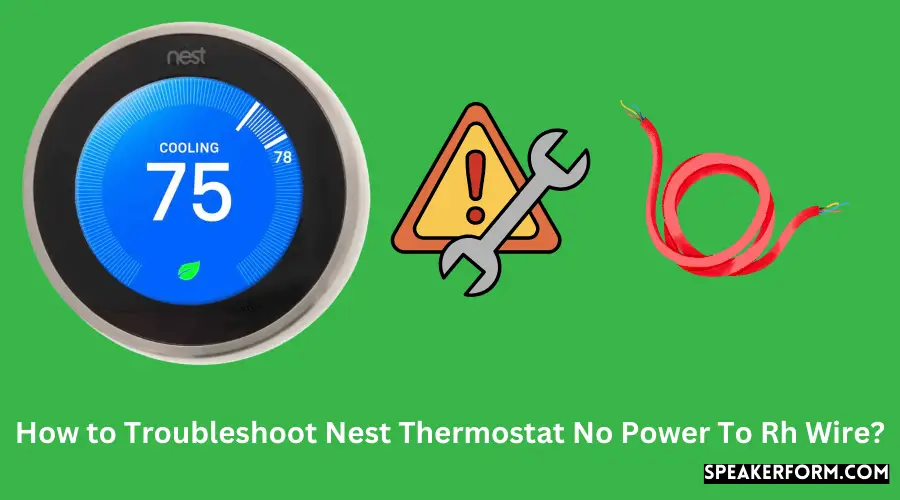Coming home after a long day at work in the blistering heat just to find that your air conditioning has not been working all day is infuriating.
But unfortunately, this is exactly what happened to me a few days ago.
However, a hot and humid house was the least of my concerns because right then, I was worried I’d have to spend hundreds of dollars on getting my AC serviced.
Thankfully the Nest Thermostat has this great feature where it gives you an error code, so you know where to start when you’re trying to fix an issue. Mine was the E74 error which meant the Rh Wire had no power.
So, I hopped online to look for solutions that would help me fix the system without having to call in professional help.
It turns out the drain pipes of my HVAC system were clogged to prevent the thermostat from malfunctioning. As a result, the thermostat system had stopped working.
Nevertheless, there are many reasons your Nest thermostat displays the ‘No Power to Rh Wire’ error.
How To Troubleshoot A Nest Thermostat With No Power To Rh Wire
In this article, I have mentioned all the ways you can troubleshoot your system.
Check for connectivity issues and correct them to fix an E74 error or no power to the Rh wire issue on your Nest thermostat.
If that doesn’t work, wash out the drain pipes and make sure your HVAC’s condensate pump isn’t clogged.
Check Your Rh Wire Connection To Your Nest Thermostat

Because Error E74 indicates that power to the Rh wire is being impeded, the first thing you should do is double-check that the Rh wire is in place.
When it lost connectivity, there’s a good likelihood it lost power, just like when my Nest Thermostat wouldn’t reload.
If you’ve installed your Nest Thermostat without a C-Wire, this could also lead to your Nest Thermostat getting the Delayed message.
Viewing the ‘Tech Info Diagram’ is an option on the main incorrect address. To open the thermostat’s system and processes, tap on it.
All broken interconnections will be highlighted in red on this page. It’s especially beneficial if you’re unsure where the Rh wire should go.
Start by removing the display and inspect the Rh wire if the connection is red.
It must be correctly inserted and secured in its position. There’s a good probability the thermostat won’t be able to create a proper connection if it’s moving or unstable.
Try the following troubleshooting options if your Rh wire is in position and the connection is not broken.
Check HVAC Float Switch
Your HVAC system comes with a condensate overflow switch located near the Air Handler unit.
This switch has been designed to prevent your house from overflowing with water.
If, for some reason, the water is not flowing properly or your drainage pipe is clogged, this condensate switch will disconnect, stopping the power to your AC.
Hence, after you have checked the Rh wire connection, check if the condensate switch is working.
It has a floating mechanism that disconnects the internal switch as it floats to the top due to access to water.
To check if the switch is working, rattle it. If it makes a clicking sound, the float switch is where it should be.
However, if the switch is disconnected, there will be water in the condensate overflow switch, and you will not hear a clicking sound.
In this case, clean the drainage pipes and move the float to the bottom manually. After that, wait a few minutes before turning on your thermostat again.
Check HVAC Control Unit Fuse
The HVAC system has a control unit fuse that can blow away due to power fluctuations or lose connections.
The fuse is attached to the control unit of your HVAC. It is a tiny switch located on the right side of the unit.
To check if it is blown, follow these steps:
- Turn off the HVAC system.
- Remove the fuse.
- Check if the connection at the center is broken. The fuse has a transparent casing, so the wires are visible.
- If the white, u-shaped wire is broken, the fuse is blown.
While getting a new fuse, make sure you get the same model as the one that blew.
The color of a fuse is meant for the current rating. So, if you take out a purple fuse, make sure you buy a purple fuse to replace it.
Moreover, if you’ve got blown a fuse, there is a chance that your HVAC has another underlying issue that caused it.
So, get an appointment with a licensed AC technician to rule out and fix any issues at your earliest convenience.
Replace the HVAC Contactor Relay
Sometimes, the E74 error is displayed due to faulty relays in the outdoor AC unit.
However, there is no specific cause for an HVAC Contactor Relay malfunction.
In most cases, the relay generates sparks due to aging. Sometimes, the coil becomes faulty and blows out the fuse from the control unit.
In any case, the contactor relay needs to be changed. However, it is advised that you don’t replace the relay on your own.
It is better to get professional help to ensure there is not a safety hazard.
In most cases, along with the relay, the fuse has to be replaced as well. Moreover, the contactor relay model varies depending on the model and capacity of your HVAC unit.
I have mentioned the relay issue so that you know it’s a possibility. It would be best if you called in professional help to take care of it.
Charge Nest Thermostat with USB

If your power was out for more than 12 hours or some other reason, the thermostat had no power connection; its internal battery might have drained.
As soon as the power comes back, the thermostat will charge the battery before turning it on.
However, if you still see a blank display after a few hours, you might have to manually charge the Nest thermostat’s internal battery.
To charge the battery, follow these steps:
- Remove the thermostat from the wall plate.
- At the back, you will see two connectors. One of them will be a MicroUSB 2.0.
- Connect it to any compatible charger and let it charge for an hour or so.
- The display will boot in a couple of minutes.
Use a Shop Vac on your Drain Lines
If you find out that your drain lines are clogged during the troubleshooting process, there is no need to call for professional help. You can easily fix this at home.
Simply go to the outside valve and suction all of the filth out using a vacuum.
It may take some time, so you’ll need a powerful tool such as a shop vac to complete the task.
Regular cleaning of drainage pipes is extremely important. This is because all sorts of fluids come out of these pipes. Hence, in most cases, it ends up clogging.
This is dangerous for your HVAC system as well. It can end up causing damage to your compressor, which will cost a lot more.
You can also call professional help for cleaning these pipes. However, vacuum suction every few months will more than suffice.
Final Thoughts on Getting Power to the Rh Wire
Your thermostat system is the interface that lets you control your HVAC system.
Hence, investing in a good thermostat almost always helps you shortlist what is wrong with your heating and cooling.
The Nest thermostat is pretty easy to troubleshoot since the errors listed are very precise.
In most cases, the troubleshooting methods mentioned in this article work well.
However, if none of those mentioned above methods works for you, you might want to call in professional help instead of fiddling with the system on your own.
In addition to this, you must take all the safety precautions while following any of the troubleshooting methods mentioned.
Make sure you turn off the thermostat and the HVAC system before changing the fuse, looking for loose connections, or cleaning the drain pipes.
Moreover, after you are done troubleshooting, wait for a few minutes before turning the system on.
Frequently Asked Questions

What is the purpose of the Rh cable on a Nest thermostat?
The Rh wire is the power input to the heating system of your air conditioning. If the connection is not established, your air conditioning will stop working.
Does R go to RC or RH?
This depends on the model of the thermostat. For example, the wire can go into either Rc or Rh in the Nest Learning Thermostat R. However, Nest Thermostat E has only one R connector.
How do I check my Nest Thermostat battery level?
You can check battery levels from the Quick View menu Settings Technical Info Power; the setting will be labeled as ‘Battery.’
Why does my Nest thermostat say in 2 hours?
This means the thermostat believes you will hit your new setpoint in two hours.

